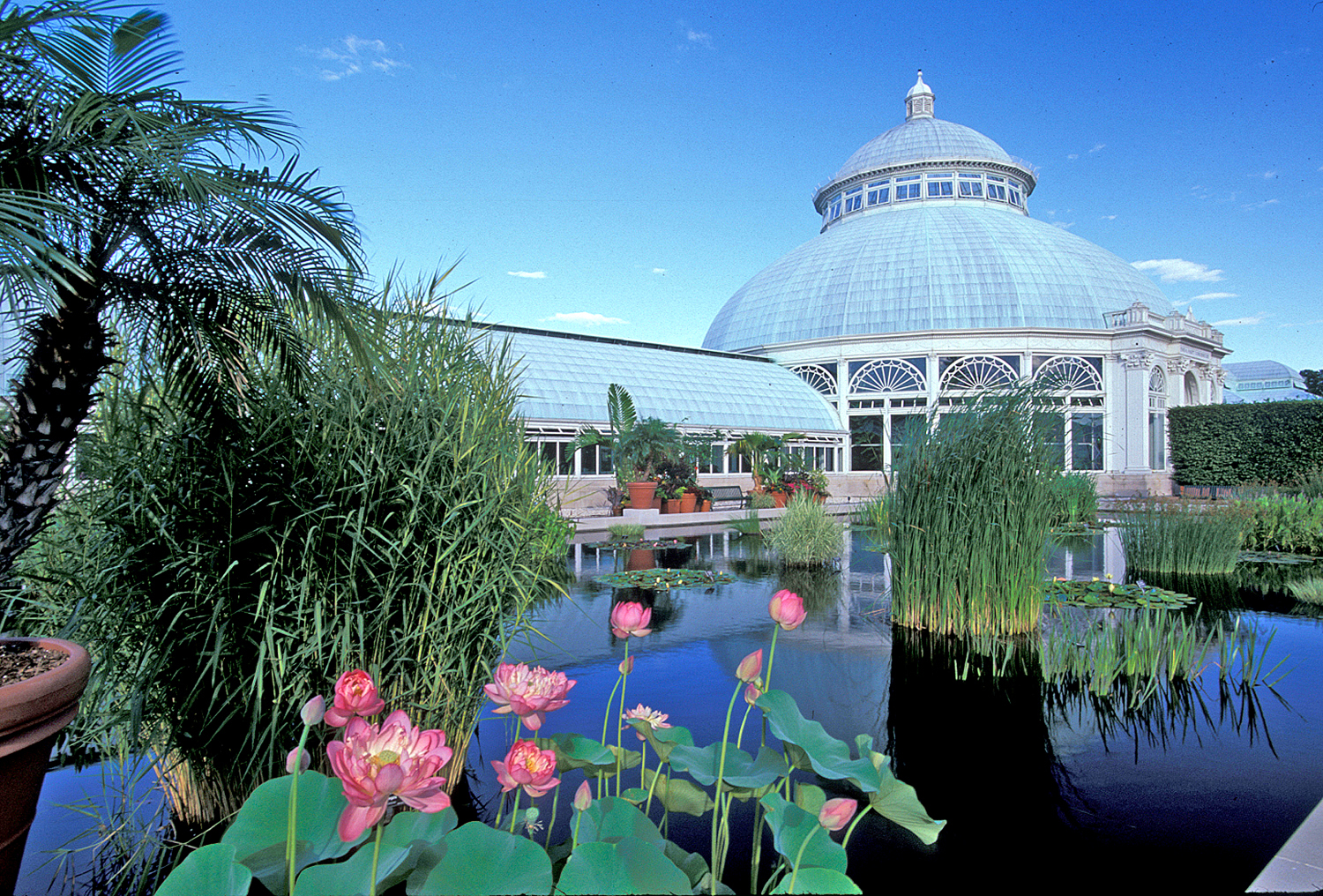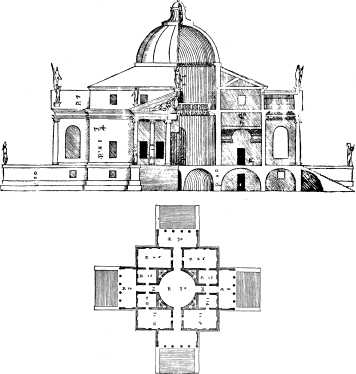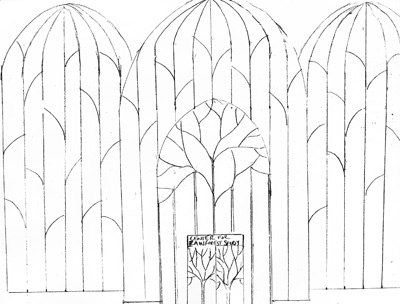New York’s Crystal Palace

Site: 
Enid A. Haupt Conservatory
1896-1902
Lesson Plan by:
Sember Weinman, Education Coordinator
Lehman College Art Gallery
Architect:
William R. Cobb for Lord and Burnham
Curriculum Link:
High School Global History and Geography
Unit Five: G:3: The British Industrial Revolution
Or- 8th Grade Social Studies
Unit Seven: An Industrial Society
Project Aim:
Students study the social, cultural, and political conditions within which the Enid A. Haupt Conservatory at the New York Botanical Gardens was built. They will look at its inspiration and precedents from England by studying the Crystal Palace—the first glass house of its kind, built by Joseph Paxton and Richard Turner, and Decimus Burton’s Palm house at Kew, in England.
Vocabulary:
Victorian: The Victorian era of Great Britain refers to the period of Queen Victoria’s rule between 1837 and 1901, and marked the height of the British Industrial Revolution and the apex of the British Empire.
Cast-Iron Architecture: Buildings that incorporate iron for structural and/or decorative purposes. After 1800 cast-iron supports were exploited as an alternative to masonry, and with the introduction of wrought-iron beams at mid-century, an efficient, prefabricated method of skeletal construction was possible, the most notable example was Joseph Paxton’s Crystal Palace. Cast-iron construction combined utility with the easy replication of attenuated classical orders in repeated bays.
Description:
The New York Botanical Gardens was founded by Columbia University botanist Nathaniel Lord Britton in 1891, after an inspiring trip to London’s Kew gardens in 1888. In Europe, leading botanical gardens grew out of royal properties or universities; but in New York City, the garden was established in Bronx Park, a 250-acre site of mostly untouched territory that included the former estate of Pierre Lorillard, a tobacco magnate. The Conservatory was part of the original plan for the gardens. This structure was built by greenhouse specialists Lord and Burnham, and completed in 1902. It includes a domed Palm house in its main gallery and has a series of five display houses on either side that form a C-shaped pattern around outdoor tropical and temperate pools.
Historical Precedent:
The Enid A. Haupt Conservatory is a direct descendant of two monumental glass structures in England. Richard Turner and Decimus Burton’s 1848 Palm House at the Royal Botanical Gardens in Kew, and the Crystal Palace designed for the 1851 Great Exhibition in London by Sir Joseph Paxton, led a transformation in architectural technology that has informed every similar structure since.
The Crystal Palace was erected in Hyde Park, London, for the Great Exhibition in 1851. The Great Exhibition was conceived to symbolize the industrial, military, and economic sense of superiority felt by the British during the Industrial Revolution. The first of its kind, it was constructed of iron, glass, and laminated wood. This eventually led to the adoption of steel-frame construction for entire buildings.
 Early Construction of the Crystal Palace
Early Construction of the Crystal Palace
Inspired by Sir Joseph Paxton’s conservatory at Chatsworth, Decimus Burton and Richard Turner designed the much larger Palm House in London’s Royal Botanic Gardens at Kew. Palm House is 363 feet long by 100 feet wide and rises to a height of 66 feet. Besides educating visitors on the natural world, one of the functions of English greenhouses at the time was to display the exotic range of plants and flowers that flourished in the British Empire.
The development of conservatories is linked to advances in the manufacture of sheet glass over the last 250 years. Up until the middle of the 18th century, glass for windows was spun as a thin disc about across. Panes were then cut from the outside edge, leaving the whirled center of the disc to be sold off cheaply or thrown away.
The 19th century stands as a golden age of conservatory buildings. Industrial advances together with imperialism and the love of gardening produced an interest in exotic gardens under glass not only in high society but among the middle class as well. The social climate was changing and wealth flowing from the Industrial Revolution was becoming increasingly used for luxury by those with wealth. The newly affluent built villas on small patches of land and attached conservatories to them as symbols of their newly achieved status in the contemporary social order. The inventive state of art engineering, architectural novelty and sheer grandeur they showcased served as inspiration in an era also devoted to the development of mass-production.
Early greenhouses were brick or stone structures with wide glazed areas between columns and a solid roof. Cast iron, allied to ever cheaper rolled glass, allowed architects to design increasingly delicate buildings where glass was the predominant material. This trend culminated in the Crystal Palace designed to house the 1851 Exhibition. This was the first major example of modular construction with its cast iron columns and framework assembled in less than a year.
 Palm House, Royal Botanical Gardens, Kew, England
Palm House, Royal Botanical Gardens, Kew, England
By the early part of the 20th century, the fascination with conservatories began to fade. The austerity of the war years and the Great Depression left little in the way of funds or free time for the enjoyment of indoor gardens and the great glass houses were abandoned or destroyed. The costs of building and maintaining structures with great expanses of glass became prohibitive while interest in the classical architectural idioms gave way to modernist style with sheer concrete, glass and steel devoid of ornate details. Over the next decades, the archetypical “old-world” conservatory virtually disappeared from the built landscape.
This unit enables students to place architecture within a historical context. The students will research and create models of cast-iron glass houses to better understand the social and political environment in which they were first imagined—and the significance of their construction to society.
Time Required:
Five class periods plus research that will be conducted as homework.
SESSION ONE:
Students will begin this unit through their study of the social, cultural, and political climate of the 19th Century, both in the Victorian Era in Britain and in the United States.
Objective:
Students will be able to understand and articulate the context within which the Enid A. Haupt Conservatory was built, its purpose, and its history.
Do Now:
Project an image of the Enid A, Haupt Conservatory. Students respond to the following question, written on the board prior to class: “What year do you think this building was created? What evidence do you have to back up your hypothesis?”
Materials: Article, “A Victorian Gem Restored”, by Paula Deitz, New York Times, April 27, 1997.
Activity:
The students are given copies of the Paula Deitz article. They are to read it and answer related questions. These may include:
1. What purpose do you think greenhouses serve now? Do you think the first greenhouses in the 1800’s served the same purpose—or have they changed over time? Keep in mind the major cultural and political changes that were taking place in both England and the United States.
2. Why do you think the English wanted to put palm trees on display indoors?
3. What buildings in England inspired the Enid A. Haupt Conservatory? Who had the idea to build a version here? How and when did this come about? Why do you think American botanists looked to the British for inspiration?
4. Where and how are the plants at the conservatory collected?
5. How much time and money was spent restoring the Enid A. Haupt Conservatory? Do you think it was worth it? Why?
 Interior view of the Crystal Palace, London, during the Great exhibition of 1851
Interior view of the Crystal Palace, London, during the Great exhibition of 1851
Wrap Up:
Students respond to the following question, “Why do you think the building of cast-iron glass houses coincided with the Victorian Era in England and right after the Industrial Revolution?”
Homework:
Conduct an internet search on one of the following topics (if students do not have access to internet, information on each of these topics can be printed and copied for them ahead of time):
1. Decimus Burton and Richard Turner’s Palm House at Kew
2. Sir Joseph Paxton’s Crystal Palace
3. Sir Joseph Paxton’s conservatory at Chatsworth
4. Pierre Lorillard
5. Nathaniel Lord Britton
SESSION TWO:
Students visit the Enid A. Haupt Conservatory at the New York Botanical Gardens.
Objective:
Students will be able to experience, describe, and put their observations of the Enid A. Haupt Conservatory within a historical context.
Materials:
Notebooks and pencils
Activity:
Students visit the Enid A. Haupt Conservatory. After walking through the building, the students free write on their experiences, including:
• Smells they noticed
• Changes in atmosphere
• Descriptions of plants they remember
• Information they learned about the biomes
• What they noticed about the structure of the building
• How they felt when inside the different environments
Homework:
Ask students to write a reflection to the question: “Imagine that you saw the conservatory at the Botanical Gardens for the first time as a member of Victorian Society in 1902. Describe your experience.”
SESSION THREE:
Students create their own designs for a glass house.
Objective:
Students will be able to begin to put the development of the glass house into a historical context by creating their own design.
Do Now:
Students respond to the following question, written on the board prior to class: “Imagine that you are commissioned to build a greenhouse for a public garden. What are some factors that you should take into consideration when you are creating your design for the building?”
Materials:
Transparency images of glass houses from the Crystal Palace and the Palm House at Kew to more contemporary greenhouses, such as the Steinhardt Conservatory at the Brooklyn Botanical Gardens, the Moody Garden Pyramids in Galveston, Texas, or Boettcher Memorial Conservatory in Denver, CO; graph paper, pencils, rulers.
 Architectural drawing of Andrea Palladio’s La Rotonda in Venice, Italy
Architectural drawing of Andrea Palladio’s La Rotonda in Venice, Italy
Activity:
Show transparency images to class. Ask students to take notes on the different functions of the glass houses viewed, which styles they prefer, if particular features stand out that they would like to use, if they observe changes in the metal support structure or the size and shape of the panes of glass through time.
Tell students that they are to make their own design for a greenhouse. Before beginning, conduct a brainstorm session and graphically organize their ideas on the chalkboard. Ask them to decide on its location and the population that it would serve—will it be a greenhouse for their school? An indoor community garden? A research conservatory where rare plants are grown and studied? Ask students to list the types of plants that would be housed in the greenhouse. Will it need to be tall enough to house trees—or will it house seedlings? Will it give people the experience of being in a tropical rainforest? Or, will it feel like a garden? Will it borrow Victorian details from the past? Or, will it look modern? How will its form fit with its function?
Tell students to create three architectural drawings of their building: One that shows the front, one that shows the interior, and one that is a floor plan. It might help to have examples of each type of drawing available.
SESSION FOUR:
Students continue work on their green house designs.
Objective:
Students will be able to put the development of the glass house into a historical context by creating their own design and critically assessing their work.
Materials:
Graph paper, pencils, rulers
Do Now:
Students respond to the following questions, written on the board prior to class: “What is your opinion on taking architectural design elements from other buildings—Does it draw interesting historical connections--or do you think that every design should be completely original? Why?”
Activity:
Students continue working on their design drawings. When they finish, they will write a page expressing their building’s purpose, supporting their design decisions, and elaborating on their ideas for the building’s use.

 Sample of front, floorplan and interior architectural drawings.
Sample of front, floorplan and interior architectural drawings.
SESSION FIVE:
Students take turns imagining that they are architects presenting their work to their clients, who are the class. The class asks the presenting architect questions about their work.
Objective:
Students will be able to critically analyze each other’s work and will gain insight into the various concerns, social demands, and pressures that guide architectural decision-making.Materials:
Students will use their own drawings and writing to give their presentations.Do Now:
Students respond to the following question, written on the board prior to class: “What differences are there between the architect’s ideas and the concerns of his or her client?”Activity:
Each student will present his or her work. When presenting, the student will show the design drawings and answer the following questions:
1. What is the name of the building?
2. What purpose does it serve?
3. Where will it be located?
4. Who will use it?
5. Briefly describe the style, including any important influences that were used or any special features.
While the students present, everyone in the class will take notes and come up with two questions for the artist.
Homework:
Choose an architectural design from your class besides your own that you consider a successful design. Write a paragraph explaining why you think it is successful and how you think it will benefit the community that it is designed to serve.Wrap Up:
Discussion question: How is your greenhouse different from the Enid A. Haupt Conservatory? How did your considerations differ from those of the original architect?
ASSESSMENT:
At the end of the workshop, students turn in their answers to the questions based on the Paula Dietz article, their free-writing from the visit to the Enid A. Haupt Conservatory, their design drawings and the supportive paragraphs for their buildings, and their arguments for the most successful design. To determine the final grade, create a rubric that places each part of the project on a four point scale.
EXTENSIONS:
1. Students can turn their design drawings into models, using craft sticks, foam core, and transparency sheets.
2. The project can be turned into a competition, where students work in groups to create models of the five most successful designs.
3. Students can write a report on different aspects of the Victorian Age, such as clothing style, politics, or technology.
4. Students can explore the cultural biases implicit in the building of both the Enid A. Haupt Conservatory and its British predecessors. What class of people were these buildings intended for—if any in particular? Were these buildings designed to make their visitors feel empowered, small, or something else?
RESOURCES FOR RESEARCH:
Web
Great Buildings Online
http://www.GreatBuildings.com/buildings/Crystal_Palace.html
The New York Botanical Gardens http://www.nybg.org
The New York Botanical Gardens Library http://library.nybg.org
The New York Times, link to article “A Victorian Gem Restored”
http://query.nytimes.com/gst/fullpage.html?sec=travel&res=9D05E6DF123EF934A15757C0A961958260
Victorian Station http://www.victorianstation.com/palace.html
Books
White, N. and Willensky, E. AIA Guide to New York City: The Classic Guide to New York’s Architecture (4th Edition), NY: Three Rivers Press, 2000.
STANDARDS:
S.S. Standard 1—History of the United States and New York: Students will learn about the changes to the New York landscape resulting from the Industrial Revolution through a visit to the Enid A. Haupt Conservatory at the New York Botanical Gardens.
S.S. Standard 2—World History: Students will develop an understanding of the ideas, social and cultural values, beliefs, and history leading to and resulting from the Victorian Age in England.
S.S. Standard 3—Geography: Students will compare the physical and social environments and human systems of England in the mid to late-1800’s with the United States, specifically New York.
S.S. Standard 4—Economics: Students will consider the economic structures and controls in place in both England and the United States during and after the Victorian Era.
S.S. Standard 5—Civics, Citizenship, and Government: Students will learn about the reigning political systems of both England and the United States preceding and at the turn of the 20th Century; and the different assumptions on power, authority, governance, and law held by the people living in these two regions.
Blueprint Strand 1—Arts Making: Based on the basic principles of cast-iron architecture, students will design and create their own architectural drawings of greenhouses that they design.
Blueprint Strand 2—Literacy In the Arts: Students become familiar with the vocabulary and important considerations implicit in architecture.
Blueprint Strand 3—Making Connections: Students apply their understanding of Victorian architecture to interpret the history within which these buildings were created.
Blueprint Strand 4—Community and Cultural Resources: Students take advantage of their access to Bronx architectural sites to better understand the purpose and power of architecture both historically and artistically.
Blueprint Strand 5—Careers and Lifelong Learning: Students will obtain exposure to architecture and art history as potential career paths.